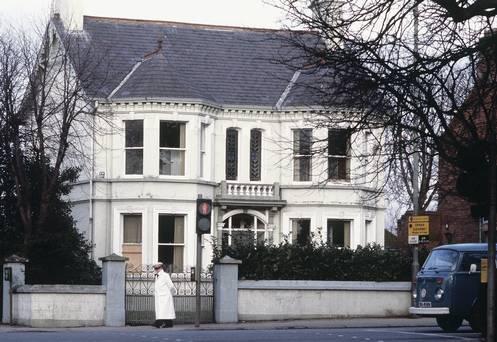|
Kincora: As this murky episode recedes...
By Liam Clarke
[with video] Kincora: As this murky episode recedes ever further into the past, time is running out to shine a light on it Kincora is one of those scandals that just won't go away. It has always been surrounded by rumours of high-level abuse rings, prostitution of boys from care homes and a cover-up by the intelligence services.It is rather like the fantastic rumours that swirled around major public figures like Jimmy Savile and Cyril Smyth. It is partly the fact these rumours turned out to be true that has reignited interest in Kincora. There is a growing belief that men like Savile and Smyth did not act alone, and that they were part of a network of abusers who were too well connected to be touched. For years the official line has also been that Kincora was solved. Three employees who systematically abused boys and youths in the east Belfast home were jailed in 1980. Since then there have been two official inquiries, which turned up nothing out of the ordinary. The first, headed by Sir George Terry, the Chief Constable of Sussex, concluded in 1983 that "there is no substance to the allegations that Army intelligence had knowledge of homosexual abuse at Kincora". The second inquiry, under Judge William Hughes, was set up just a year later. "The events giving rise to this Inquiry... can no longer be regarded as exceptional. They must perhaps be recognised as earlier symptoms of a general malaise permeating the United Kingdom," it concluded. Neither probe had the power it needed. In the Terry inquiry a team of RUC detectives, led by Superintendent George Caskey, were not allowed to even meet a senior MI5 officer who had received a report on Kincora from a military intelligence officer who had spoken to the BBC's investigative journalist Peter Taylor under the pseudonym 'James'. Today we know that 'James' was Captain Brian Gemmell and the MI5 officer he reported to was Ian Cameron, a veteran of Cold War Berlin. Now it may be too late to hear Mr Cameron's side of the story. Colleagues we spoke to reported that he was dead. Even if he was alive, he would now be in his late 90s. The Caskey team were allowed to submit a series of written question to him asking why no action was taken to investigate Mr Gemmell's allegations, why Mr Gemmell was told to drop the issue of Kincora, and whether MI5 had been prepared to let the abuses continue. The questions were never answered. We don't know if Mr Cameron even received them. Colin Wallace, another military intelligence officer at the centre of the issue, tried to raise Kincora before Mr Gemmell, and pursued it harder. He passed briefings to the media, he sent internal reports and he claimed prominent people were in the know. After that he was forced out of the Army under the threat of a trumped-up disciplinary charge that he had passed a classified document to a journalist, though it later emerged he had been cleared to do so. In 1980, as stories about Kincora started to surface again and pressure grew for an inquiry, Wallace was arrested and subsequently convicted of the manslaughter of a man whose wife he was allegedly having an affair with. The conviction was quashed 16 years later when it was admitted that the forensic evidence it was based on had been supplied by "an American security source". Wallace kept copious notes on Kincora and, before Mr Gemmell came forward, was the main intelligence insider pressing for disclosure. Asked if he was framed, he said: "I can't prove that but when I ask other people why they don't come forward with what they knew or suspected I tend to get the reply: 'Look what happened to you'." These are the sort of circumstances that would get rejected by a publisher if they were included in a novel. But there is more. William McGrath, the leading abuser in Kincora, was a charismatic figure who led a strange born again Christian cult based in Faith House, Belfast. There, according to one victim, now an elderly man, he abused scores of boys and young men under cover of religious counselling, starting in the 1940s. McGrath was very well connected, which may explain how he managed to evade detection and justice for so long. He formed links with the intelligence services when he smuggled Bibles into Russia before the war. He always claimed he had never severed those ties. In an era when homosexuality was illegal he was connected to a number of influential closet homosexuals, like Sir Knox Cunningham, the Parliamentary Private Secretary to Harold Macmillan, the former Prime Minister. This has all the makings of a can of worms, and as those who know the truth are getting older or dying, we may not get another chance to lift the lid on it.
|
.
Any original material on these pages is copyright © BishopAccountability.org 2004. Reproduce freely with attribution.
